The Civics Game turns civics education into a living classroom simulation. Each class becomes its own “city,” where students learn how democracy works by participating in it.
Teachers guide students through lessons, campaigns, and elections that connect civic principles to real-world decision-making. The program combines an online platform with classroom activities to make government tangible and collaborative.
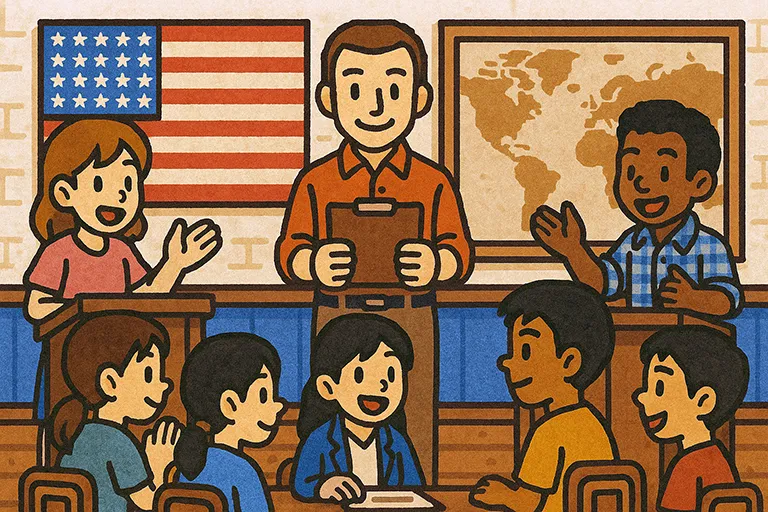
Laying the Groundwork: How ELPS 101 Prepares Students for The Civics Game
Before students begin the simulation, they complete ELPS 101 – Democracy and the American Electoral Process, a structured LearnDash course that builds the civic knowledge they’ll need to govern their own classroom city.
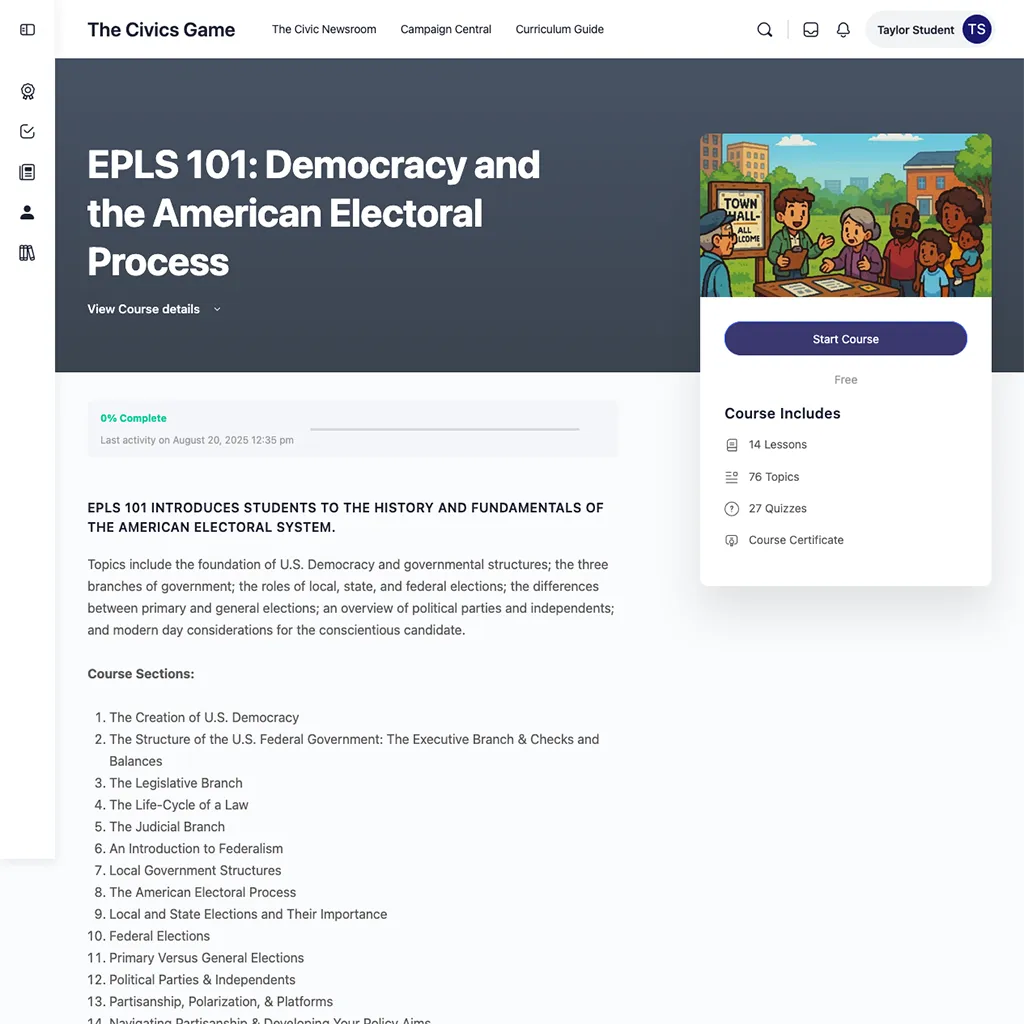
This 14-lesson course introduces the foundations of U.S. democracy with special focus on local government — how cities and towns run and how students can practice those processes through their own classroom simulation.
Each lesson focuses on practical understanding and critical thinking, not rote memorization. Students explore how laws are made, how power is shared between branches and levels of government, and how partisanship and civic participation shape real outcomes. By the time they complete ELPS 101, they can confidently form parties, debate issues, and run for office inside The Civics Game.
For teachers, this course provides built-in assessments, pacing guides, and automatic grading through LearnDash, so you can focus on facilitating discussions and connecting lessons to current events. Together, ELPS 101 and the game transform civics from a textbook subject into a living experience that meets state standards while igniting student curiosity and civic agency.
Program Overview
The Civics Game curriculum follows the school calendar and can be adapted to any schedule. Teachers receive orientation and support before launch, and students can join the game at any point in the year. The timeline below shows a typical implementation pattern:
- Phase 0 – Groundwork: teacher training, classroom setup, and student onboarding
- Fall Semester – Citizenship and Elections: learning civic foundations, forming parties, and running campaigns
- Spring Semester – Leadership and Governance: governing the classroom city, creating ordinances, and reflecting on outcomes
Each phase aligns with the EPLS 101 and EPLS 201 courses and meets state civics standards while encouraging teamwork, inquiry, and leadership.
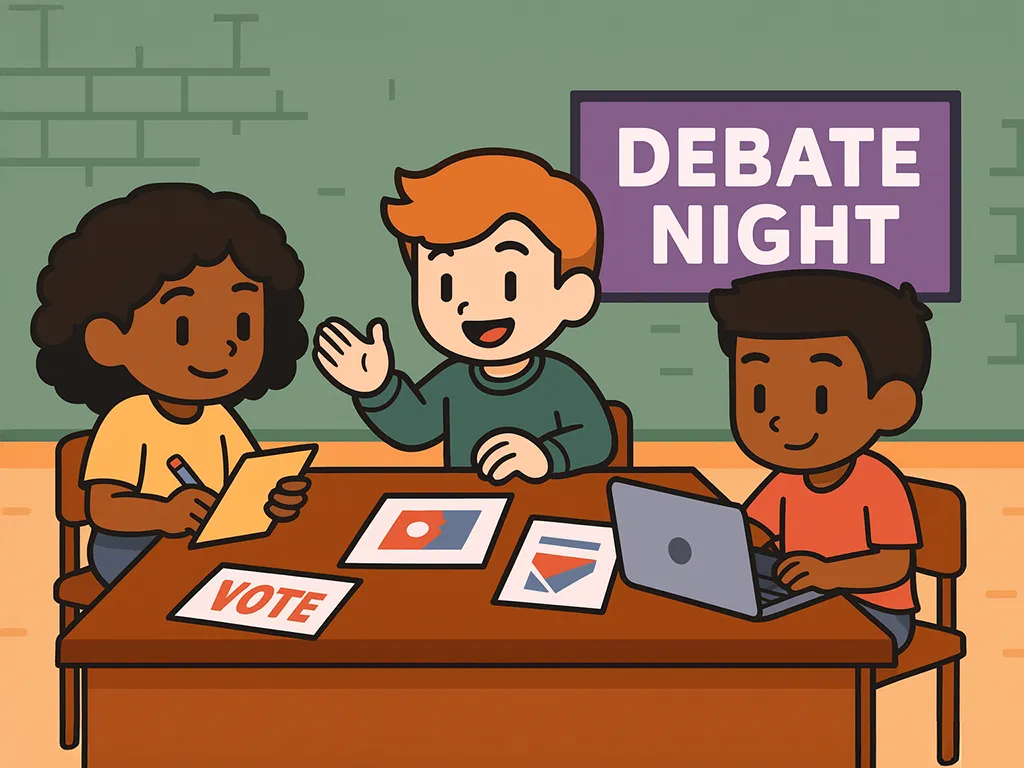
Fall Semester: Citizenship, Parties, and Local Governance
- Phase 0 – Setting the Groundwork (Pre-Semester)
- Teachers complete orientation, classroom setup, and technical preparation.
- Students receive a brief introduction to the game platform before formal instruction begins.
- Weeks 1–2: Getting Started
- Explain The Civics Game and set up student profiles.
- Students explore how gameplay differs for the Party and Journalist paths.
- Administer short introductory activities or pre-assessments to help students connect what they already know about government to the year ahead.
- Students begin EPLS 101: Democracy and the American Electoral Process, learning how democratic systems developed and how the principles of representation apply in their own local communities.
- Weeks 3–7: Learning and Practice
- Students continue EPLS 101, studying how city and community governments operate and how authority is distributed across local offices.
- Teachers may extend or adapt lessons through class discussions, mini-projects, or provided extension activities.
- Students design early campaign materials such as sample party platforms or civic awareness posters.
- Milestone: By mid-semester, each student selects their civic path — Party Member or Journalist — and begins working toward advancement in that role.
- Milestone: By Week 7, students have completed at least half of EPLS 101 and can explain how local elections reflect broader democratic values.
- Weeks 8–10: Forming Parties
- Students learn how local elections and community campaigns function.
- They join or form political parties, create party platforms, and recruit members.
- Journalists begin covering emerging parties and issues.
- Students continue working through the final lessons of EPLS 101.
- Milestone: By Week 8, students unlock new in-game activities by earning points.
- Milestone: By Week 10, every student has joined a party or chosen to remain independent.
- Weeks 11–14: Campaigns and Debates
- Students finish EPLS 101: Democracy and the American Electoral Process and prepare to begin EPLS 201: Navigating the Path to Candidacy.
- Activities include moderated interviews, issue debates, and practice elections focused on local concerns.
- Teachers guide respectful discussion, highlight persuasive communication, and connect classroom issues to real civic contexts.
- Milestone: By Week 14, students complete EPLS 101 and are ready to start EPLS 201 in the next phase.
- Milestone: Students demonstrate their understanding of local government and campaign principles through class discussions, reflections, or short formative assessments before moving on to EPLS 201.
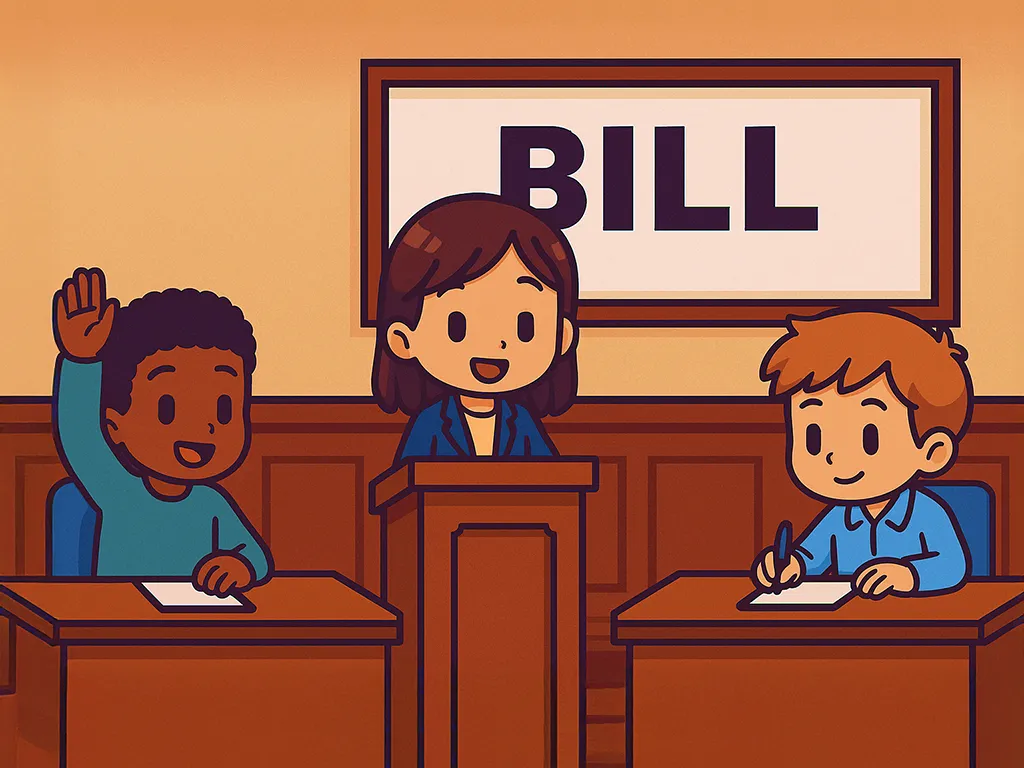
Spring Semester: Campaigns, Elections, and Local Leadership
- Weeks 18–20: Leadership Training
- Students begin EPLS 201: Navigating the Path to Candidacy, exploring what it takes to run a fair and ethical local campaign.
- Activities introduce campaign planning, public speaking, and community engagement.
- Students also study how civic leaders govern through ordinances and policy decisions.
- Milestone: By Week 20, students complete the core lessons of EPLS 201 and can outline a local campaign plan.
- Weeks 21–23: Becoming a Candidate
- Students decide whether to run for Mayor or Council Member.
- Candidates submit petitions, craft speeches, and participate in debates.
- Journalists conduct interviews and manage campaign coverage through class media outlets.
- Weeks 24–26: Elections
- Week 24: Primary elections are held after candidates meet their EPLS 201 requirements.
- Week 26: General elections take place, and students vote for their classroom city’s leaders.
- Milestone: By the end of Week 26, elected leaders assume their roles as Mayor or Council Members.
- Weeks 27–28: Leadership and Application
- Newly elected leaders and citizens shift from campaigning to governing.
- The Mayor and Council collaborate to propose, debate, and enact classroom ordinances that address shared issues or simulated community challenges.
- Students apply what they learned in both EPLS 101 and EPLS 201 by practicing compromise, leadership, and participatory decision-making.
- Optional activities may include solving mock crises, designing civic improvement projects, or developing proposals for school-based initiatives.
- Milestone: Students complete EPLS 201 and demonstrate their understanding through governance projects and reflection.
End-of-Year Activities
- Weeks 29–32: Advanced Challenges
- Optional activities like solving mock crises or forming coalitions.
- Students practice more advanced skills.
- Weeks 33–36: Reflection and Wrap-Up
- Students discuss what they learned and share their experiences.
- Teachers help students reflect and complete final projects.
- Milestone: Students complete post-game reflections and end-of-course assessments, demonstrating how their knowledge of civic systems, leadership, and collaboration has grown throughout the year.
Guidance for Mid-Year Enrollees
Students who join after the semester begins can complete missing lessons in EPLS 101 and EPLS 201 independently through The Civics Game platform. Because lessons are self-paced, new participants can quickly catch up and take part in classroom activities and local elections alongside their peers.
Key Milestones Recap
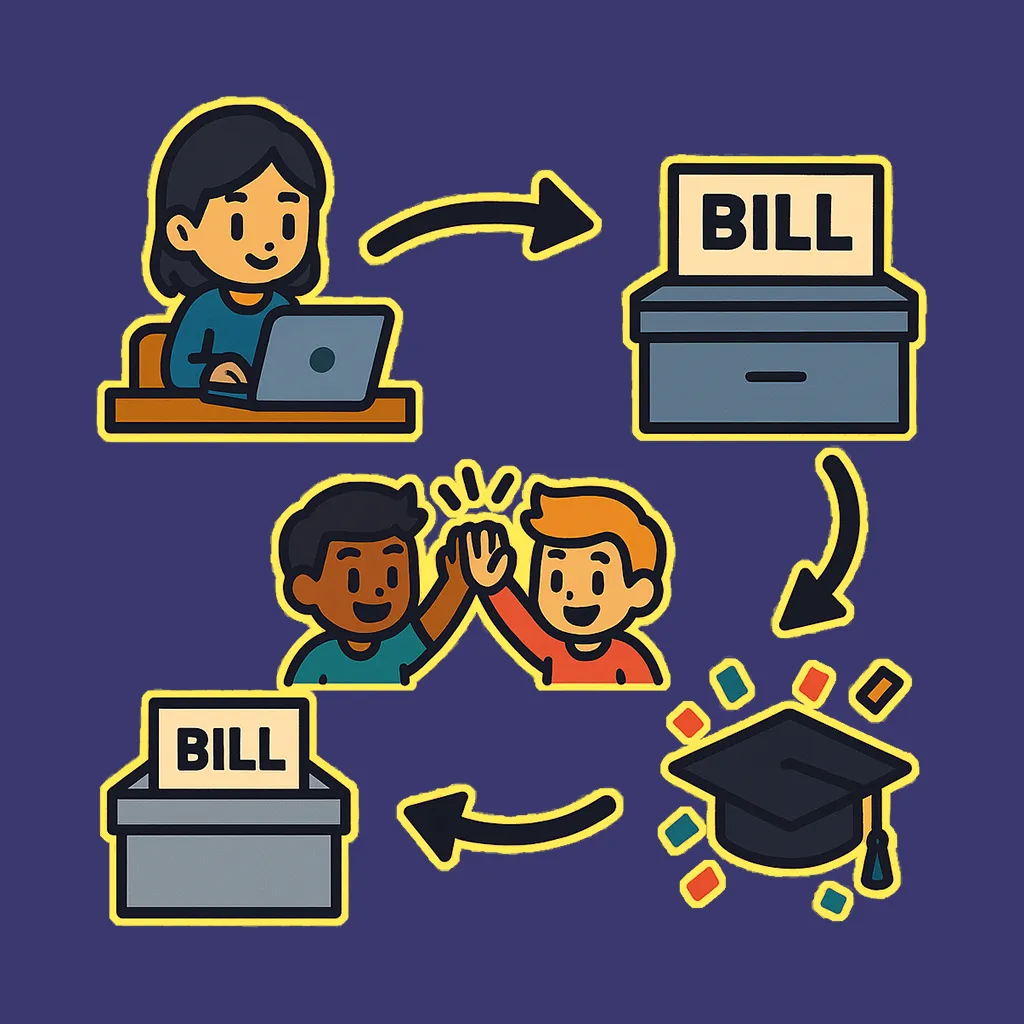
| Week | Milestone |
|---|---|
| Pre-Semester | Teachers complete orientation, classroom setup, and technical preparation. |
| Week 2 | Students finish orientation, create profiles, and begin EPLS 101: Democracy and the American Electoral Process. |
| Week 7 | Students reach the midpoint of EPLS 101 and choose their civic path — Party Member or Journalist. |
| Week 10 | All students have joined a party or chosen to remain independent. |
| Week 14 | Students complete EPLS 101 and demonstrate understanding through discussion or short assessments before starting EPLS 201: Navigating the Path to Candidacy. |
| Week 20 | Students complete core lessons of EPLS 201 and can outline a local campaign plan. |
| Week 24 | Primary elections are held after candidates meet EPLS 201 requirements. |
| Week 26 | General elections take place; elected leaders assume their roles as Mayor or Council Members. |
| Week 28 | Students complete governance and reflection projects demonstrating leadership and collaboration. |
| Weeks 33–36 | Students finalize reflections and end-of-course assessments summarizing civic learning and growth. |
Helpful Tips for Teachers
Plan and Adapt:
This curriculum is flexible. Adjust activities and timing to best fit your class. Clear planning can help you easily lead each activity.
Support and Guidance:
Your role is important. Guide students through debates and activities. Give helpful feedback and encourage respectful discussions.
Assessment and Reflection:
Use quizzes and activities to check student progress regularly. At each milestone, ask students to think about what they’ve learned.
Real-World Connections:
Connect the game to current events in the news. This helps students see why civics matters in their daily lives.
Extra Resources:
Additional teaching tools and lesson extensions are in development. Check back soon for downloadable materials.
Program Outcomes and Opportunities
By the end of the school year, students will have experienced the full cycle of civic participation — from learning how government works to leading one themselves. They will have created policies, held elections, and practiced collaborative decision-making in their classroom city.
For schools and communities, The Civics Game provides a scalable model for civic education that blends online learning with hands-on engagement. District administrators, parents, and education partners can contact our team to learn about implementation options, pilot programs, and future collaborations.